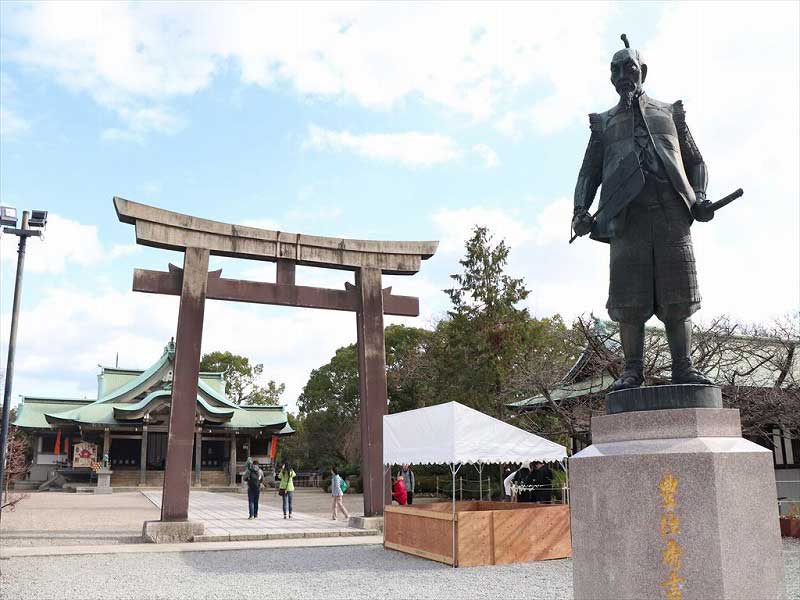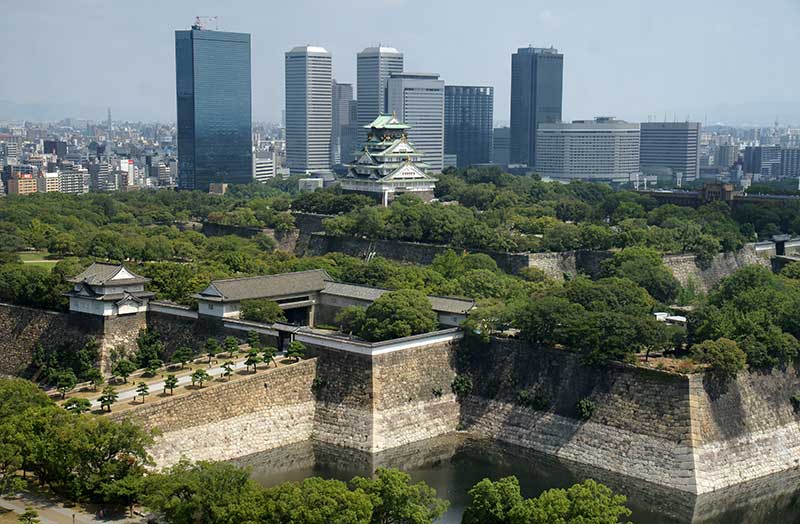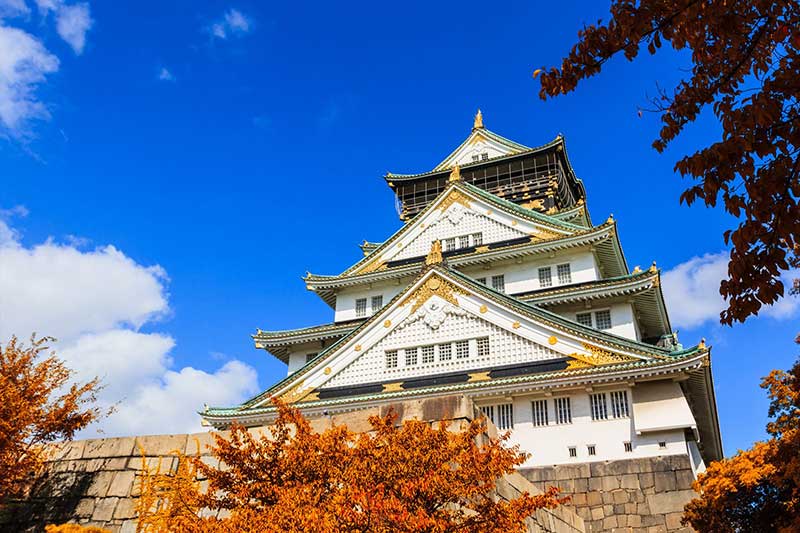Osaka Castle stands as a magnificent testament to Japan’s rich history and cultural heritage. This iconic landmark, nestled in the heart of Osaka, has witnessed centuries of triumphs, tragedies, and transformative events. In this article, themanestreet delve into the captivating story behind Osaka Castle, exploring its historical significance, architectural marvels, cultural heritage, restoration efforts, and tips for visiting this remarkable destination.
Osaka Castle: A Brief Overview
Originally built in the late 16th century, Osaka Castle, also known as “Osaka-jo” in Japanese, holds a pivotal place in Japan’s feudal history. The castle played a crucial role as a symbol of power, defense, and governance during the tumultuous Sengoku period. Today, it stands proudly as one of Japan’s most renowned landmarks, attracting millions of visitors each year.
Historical Significance of Osaka Castle
Construction and Early Years
The construction of Osaka Castle began in 1583 under the orders of renowned warrior and politician Toyotomi Hideyoshi. This monumental fortress served as Hideyoshi’s grand vision to solidify his power and unify Japan. With its strategic location on a high elevation, the castle served as a stronghold and offered a commanding view of the surrounding area.
The Siege of Osaka
Osaka Castle’s history is intertwined with the turbulent times of the Siege of Osaka, a series of conflicts between the Toyotomi and Tokugawa clans in the early 17th century. These conflicts marked the end of the Sengoku period and the beginning of the Edo period. Despite several battles and the castle’s partial destruction, Osaka Castle remained a symbol of resilience and determination.

Architecture and Design of Osaka Castle
The architecture and design of Osaka Castle are a testament to the remarkable craftsmanship of the past. The castle’s main keep, known as the Tenshukaku, stands tall at five stories high and offers breathtaking panoramic views of Osaka. The exquisite exterior showcases intricate details and is adorned with gold accents, embodying the grandeur and opulence of the Momoyama period.
Surrounding the main keep, a system of moats provides both aesthetic appeal and formidable defense. The inner and outer moats, fed by the Okawa and Dojima rivers, create a picturesque landscape that enhances the castle’s allure. Additionally, imposing gates and defensive structures, such as the Otemon Gate and the Sengan-yagura Turret, add further layers of protection.
Cultural Heritage and Symbolism
Osaka Castle is not just a historic structure; it embodies the essence of Japanese culture and symbolism. The sprawling Osaka Castle Park, encompassing approximately 106 hectares, offers visitors a tranquil retreat amidst the bustling city. The park is especially popular during the cherry blossom season when thousands of sakura trees bloom, creating a breathtaking backdrop for hanami (flower viewing) parties.
Within the castle grounds, the Osaka Castle Museum provides an immersive experience, delving into the castle’s history, exhibits artifacts, and showcases the cultural significance of the area. The museum’s displays offer visitors a glimpse into the castle’s past, the life of its former inhabitants, and the historical events that unfolded within its walls.

Restoration and Preservation Efforts
Over the centuries, Osaka Castle has undergone destruction and reconstruction multiple times. Despite facing extensive damage during the bombings of World War II, meticulous restoration efforts have ensured its preservation. The current reconstruction, completed in 1997, meticulously adheres to the castle’s original design and aesthetics, allowing visitors to experience the magnificence of the past.
Today, Osaka Castle serves as a historical landmark and educational institution, sharing the region’s history with visitors from around the world. The ongoing preservation efforts ensure that future generations can appreciate and learn from this architectural marvel.
Visiting Osaka Castle
Access and Location
Located in Chūō-ku, Osaka City, Osaka Castle is easily accessible via public transportation. The nearest station is Osakajō-koen Station on the JR Loop Line, or alternatively, Morinomiya Station on the JR Osaka Loop Line and the Osaka Metro Chūō Line.
Admission and Opening Hours
Visitors can explore the castle grounds and Osaka Castle Park free of charge. However, to enter the main keep and Osaka Castle Museum, there is an admission fee. The castle is open daily from 9:00 AM to 5:00 PM, allowing ample time to immerse yourself in its captivating history and surroundings.
Highlights and Attractions
While exploring Osaka Castle, there are several must-visit attractions. Apart from the awe-inspiring main keep, visitors can explore the Nishinomaru Garden, which offers a picturesque landscape and serene atmosphere. The garden is a popular spot for relaxation and photography, particularly during the cherry blossom season.
Moreover, the Hokoku Shrine, situated within the castle grounds, offers a spiritual sanctuary and an opportunity to learn about the shrine’s cultural significance. Its vibrant red torii gates and tranquil surroundings provide a stark contrast to the grandeur of the castle.
Osaka Castle: A Source of Pride
Osaka Castle holds a special place in the hearts of the locals and serves as a source of pride for the people of Osaka. It symbolizes resilience, cultural heritage, and the indomitable spirit of the region. Whether you’re a history enthusiast, an architecture aficionado, or simply seeking a serene escape amidst bustling city life, Osaka Castle offers a captivating experience for visitors of all ages.
Conclusion
Osaka Castle stands as a living testament to Japan’s rich history, showcasing remarkable architecture, cultural heritage, and enduring spirit. Through centuries of tumultuous events, destruction, and reconstruction, the castle has persevered, emerging as an iconic symbol of Osaka’s past and present. Visiting Osaka Castle allows you to immerse yourself in the region’s vibrant history, explore its architectural wonders, and experience the cultural significance that continues to captivate visitors from around the world.
FAQs
Is Osaka Castle the original structure?
No, the current structure is a faithful reconstruction of the original castle, which faced destruction and multiple reconstructions over the centuries.
Can visitors enter the main keep?
Yes, visitors can enter the main keep and explore its interior, offering panoramic views of Osaka.
Are there any guided tours available?
Yes, guided tours are available within the castle grounds, providing insightful commentary and a deeper understanding of the castle’s history. Check with the castle’s official website or visitor center for tour schedules.
What is the best time to visit Osaka Castle?
The best time to visit Osaka Castle is during the cherry blossom season, usually in late March to early April when the sakura trees are in full bloom. It offers a picturesque and magical experience.
Are there any hotels near Osaka Castle?
Yes, there are several hotels and accommodations located in close proximity to Osaka Castle, offering convenient access for visitors who wish to explore the castle and its surroundings.











